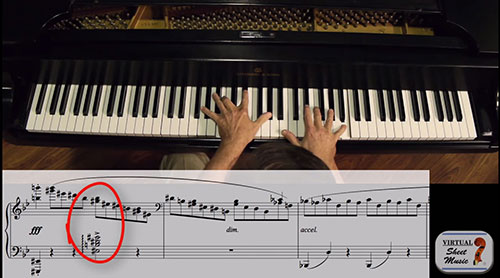This is a really interesting question. Sometimes you will see E sharps or C flats written in music and you might wonder why they just don’t write F or B instead – after all, an E sharp is an F and a C flat is a B on a piano. So why add this level of complexity?
Let’s start by exploring the foundations of Western Music. For most of us the music we are familiar with is founded upon the principles in Western Music. Everything from Rock to Pop to Symphonies utilizes the same aspects of being built upon scales.
What are scales exactly? Musical Scales are a series of whole steps and half steps that have all the notes (letter names) in order. For example, here is a C major scale:

When you see these string of notes together you should recognize that they are Diatonic, which means they are all built on the interval of a second. In other words, one letter to the next letter, line to space, space to line consecutively.
For more information on scales we have a series of in-depth videos on this topic:
How Many Musical Scales Are There?
What is a Relative Minor Scale?
So let’s get back to the topic at hand. Why is it a good idea to sometimes have E sharp instead of F or C flat instead of B written in your music?
Let’s say for example you had a piece in C-sharp major:

As you can see, it has all the same letters as a C major scale and we happen to have an E# in there as well instead of F. It would look pretty weird on paper if the notes were C# D# F F# G# A# B# C# wouldn’t it? In cases like the one above it is much easier to decipher the notes if they are written diatonically.
Let’s examine this same topic when it comes to chords. Chords are built on the interval of 3rds (for more information you can see our video: What is a Chord?). To put it in simple terms, chords are built upon the interval of a 3rd which are two letters apart – all lines or all spaces. So for example, here is a C major chord:

So if you had a C# major chord it would look like this:

And the same principle applies as the one above. It’s much easier to comprehend the chord written with an E# rather than an F. It makes more sense and is more digestible on the page. It is instantly recognizable as a chord.
Hopefully this clarifies the concept of why E sharps and C flats are (and other accidentals which are white keys) are easier to read than their enharmonic equivalent spellings.
Thanks again for joining us here at Living Pianos, if you have any questions or comments please feel free to contact us directly: info@LivingPianos.com or (949) 244-3729.













